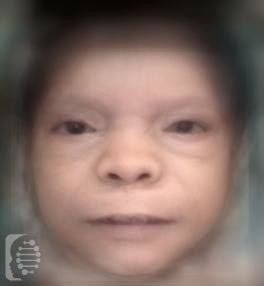What is Barber-Say syndrome (BBRSAY)?
Barber-Say syndrome is a rare congenital condition with fewer than 20 patients diagnosed worldwide, to date.
It’s most common feature is excessive hair growth, especially on the back of affected individuals. The syndrome also presents with unique facial features, thin skin, and deafness.
This syndrome is also known as:
Barber-Say syndrome Hypertrichosis, Atrophic Skin, Ectropion, And Macrostomia.
What gene change causes Barber-Say syndrome (BBRSAY)?
Mutations in the TWIST2 gene are responsible for the condition. There is some debate and ongoing research into how the mutation is inherited, although research suggests some evidence of inheritance in an autosomal dominant pattern.
In the case of autosomal dominant inheritance, just one parent is the carrier of the gene mutation, and they have a 50% chance of passing it onto each of their children. Syndromes inherited in an autosomal dominant inheritance are caused by just one copy of the gene mutation.
What are the main symptoms of Barber-Say syndrome (BBRSAY)?
Excessive hair growth is a major feature of the condition. As is weak and thin skin, and delayed tooth eruption. Individuals may fail to thrive. Deafness is also common.
Unique facial and physical features of the syndrome include outward-turned eyelids, absent eyebrows, and wide-set eyes. A large and broad mouth is also a common feature.
Possible clinical traits/features:
Telecanthus, Sparse and thin eyebrow, Autosomal dominant inheritance, Wide mouth, Shawl scrotum, Thin vermilion border, Abnormal eyelash morphology, Aplasia/Hypoplasia of the nipples, Aplasia/Hypoplasia of the eyebrow, Breast aplasia, Bulbous nose, Abnormality of the pinna, Hyperextensible skin, High palate, Hearing abnormality, Underdeveloped nasal alae, Hypoplastic nipples, Hearing impairment, Hypertrichosis, Hypertelorism, Low-set ears, Mandibular prognathia, Redundant skin, Anteverted nares, Intellectual disability, Abnormality of male external genitalia, Abnormality of female external genitalia, Micrognathia, Dry skin, External ear malformation, Atresia of the external auditory canal, Cutis laxa, Delayed eruption of teeth, Dermal atrophy, Ectropion.
How is it diagnosed?
To find out if someone has a diagnosis of Bareber-Say syndrome (BBRSAY), it is important to have a consultation and evaluation with a clinical genetic specialist. Specialists may also suggest specific genetic testing or other types of tests to help reach a diagnosis. FDNA’s AI technology can help speed up the diagnostic process by analyzing facial features and other health information.

